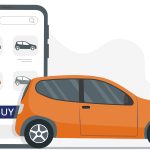Self Driving Cars & What it Means for Auto Transport
Cars of the Future
The basic infrastructure of vehicle and driver is changing before our eyes. We’re hearing more and more about “self-driving cars” from big names like Google, Tesla, Uber and Ford. It’s no secret that this technology is going to come to market, and perhaps sooner than we think. Headlines have featured all kinds of information from major tech companies who are developing their own prototypes, like the Google Self Driving Car Project. The world has an obsession with the idea of pushing a button and arriving at your destination, no pilot required. Last week even the Department of Transportation came out in support providing legislation and guidelines for testing to help promote development of automated technology.
Why are Self-Driving Cars Drawing Us In?
It’s as though we are in a Back to the Future sci-fi movie watching unbelievable technology finally becoming reality. Fully automated vehicles are no longer a futuristic concept waiting to be developed. They are here, albeit at a low level. (We haven’t seen a driverless car next to us on 635 in Dallas yet, anyway). In fact, most “autonomous” cars released at this point are categorized as a Level 1 or Level 2 according to guidelines published by the National Highway Traffic Safety Administration (NHTSA) outlining five levels of autonomy. There are so many implications for self-driving vehicles. It’s going to change the landscape, and there are a lot of potential risks and benefits to consider, and more legislation to come on that front.
First, consider what autonomous vehicles can do for someone with a previous limitation impacting their ability to drive or operate a vehicle. Folks who cannot drive for themselves because of some kind of disability or even the elderly will be able to experience the freedom of independent mobility. In our book that’s a reason to be excited! It’s a real life example of technology advancing human capability.
Second of all, there are safety implications. Consider what causes the majority of car crashes: human error. Autonomous technology, if advanced, could potentially limit or eliminate crashes caused by humans making poor choices behind the wheel. We’re talking about the possibility of saving thousands of lives. Of course, we have a ways to go to ensure the safety of passengers in driverless cars. With the NHTSA and the DOT supporting automation, manufacturers and tech companies now have rigorous principles and policies to follow as they progress. What matters is that the infrastructure to support development and testing is in place.
When are autonomous vehicles hitting the market?
They already are, in a limited fashion. You may have heard a few short months ago about Uber. Think about what driverless cars could do in the ride-sharing industry, where the main overhead cost is drivers. Uber has a fleet of Volvo XC90s that launched in Pittsburgh, PA just a few short months ago, but for now they’re being paired with safety drivers. Things like steering and breaking are automated but the driver can take control in certain conditions.
Ford has announced that they will mass produce autonomous vehicles — without a steering wheel!– by the year 2021. Tesla Motors’ autonomous software known as Tesla Autopilot is essentially a giant technology upgrade you can opt for on a new Tesla model.
There are a lot of big players getting in on the autonomous vehicle action. What could self-driving trucks do for auto transport and the logistics industry in general? We get excited at the thought.
Truck drivers would no longer have to be so engaged in the most grueling part of truck driving; instead serving as supervisors of their load at the origin and destination and being more of a pilot on long stretches of open highway.
Otto is just one company that’s already started developing the technology for the commercial shipping and logistics industry.
This isn’t the last you’ll hear from us on automated vehicles. What do you think?






